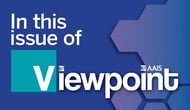In 2002, Amazon eliminated millions of dollars from its technology costs by switching to the Linux operating system, an open source technology platform from the Linux Foundation. In a filing with the Securities and Exchange Commission, Amazon stated it was able to cut technology expenses by about 25%, from $71 million to $54 million, primarily through “migration to a Linux-based technology platform that utilizes a less-costly technology infrastructure, as well as general price reductions for data and telecommunication services due to market overcapacity[1]. Amazon continues its open source technology strategy today, as do thousands of other companies. Today, 96.3% of the world's top one million servers run on Linux[2].
technology expenses by about 25%, from $71 million to $54 million, primarily through “migration to a Linux-based technology platform that utilizes a less-costly technology infrastructure, as well as general price reductions for data and telecommunication services due to market overcapacity[1]. Amazon continues its open source technology strategy today, as do thousands of other companies. Today, 96.3% of the world's top one million servers run on Linux[2].
It's recommended that you view in Full Screen or use the +/- options for the optimal experience.
The success of Linux as a trusted, supported, cornerstone of the internet infrastructure has led to an increasing number of technology solutions to move under the open source umbrella. In all cases, these open source platforms benefit from continual improvement by a large community of developers around the world, with options to use the software in any third-party cloud provider and with no vendor lock-in, significantly reducing the cost and risk of technology investments. Open source software is often cheaper and more flexible and has more longevity than proprietary software because it is developed by communities rather than a single author or company. But open source is also more than software; it’s a business model.
The open source business model is now being extended to other industries beyond technology companies where technical platforms are not strategic drivers, but essential tools for operations.
Movies
Out of 200 of the most popular movies of all time, 137 were either visual effects driven or animated. A common theme? They were crafted with open-source software[3]. This was made possible by the Linux Foundation joining forces with The Academy of Motion Picture Arts and Sciences to form Academy Software Foundation, a neutral forum for open-source developers, in both the motion picture and broader media industries, to share resources and collaborate on technologies for image creation, visual effects, animation, and sound. The founding members include some of the biggest names in the industry like Cisco, DreamWorks Animation, Intel, and Walt Disney Studios. A perfect marriage between technology and media-driven businesses.
Automotive
Automotive Grade Linux (AGL) is a collaborative open source project that is bringing together automakers, suppliers, and technology companies to accelerate the development and adoption of a fully open software for connected cars. With Linux at its core, AGL is developing an open platform from the ground up, which can serve as the de facto industry standard, enabling rapid development of new features and technologies. Members include Ford, Audi, Mercedes-Benz, Toyota, Mazda, Amazon, and Panasonic[4].
Financial Services
FINOS, the FinTech Open Source Foundation, seeks to accelerate collaboration and innovation in financial services through the adoption of open source software, standards, and best practices. This ensures financial organizations are best positioned to grow in an ever-evolving technological landscape. FINOS is a diverse community of developers, financial services, and technology companies, both large and small, with over 30 Member organizations driving 11 programs[5]. Founding members include Goldman Sachs, JP Morgan, UBS, Morgan Stanley, Capital One, Intel, and Accenture.
Insurance
So how can the insurance industry leverage this business model to accelerate innovation, reduce costs, and establish a trusted platform for technology development with no vendor lock-in? Through the Linux Foundation’s openIDL Project. openIDL, the open Insurance Data Link project, is the result of three years of cooperative work between carriers, regulators, and AAIS as a national insurance advisory organization, to create a technical platform and new business model for collaboration in the insurance industry.
The benefits of openIDL begin with a new network that offers carriers control of their data, keeping it secure and private, while also enabling them to share information with regulators and other third parties without core data ever leaving their data center. openIDL provides a new way for carriers to reuse their data center resources through open source solutions for regulatory reporting, to build new applications with predictive modeling companies, and innovative solutions for leveraging Internet of Things (IoT) data, all without creating big data headaches. As with all open source projects, this is just the beginning, and where we go is determined by engaged Members.
Insurance carriers can join openIDL today through the Linux Foundation portal, along with The Hartford, Travelers, The Hanover Insurance Group, Selective Insurance, AAIS, Chainyard, and regulators, to solve some of the toughest information exchange problems facing the industry. Data standards have already been developed for Homeowners and Auto, and automation of regulatory reporting is in development with the goal of eliminating the staffing and third-party processing costs of stat reporting for carriers.
But why stop there? Open source is a business model, not a technology platform. Where we go next as an open source community will be directed by our industry and those who invest people and time into the new solutions through openIDL membership.
What if commonly used form and contract language moved into the open source business model to support new product development at no cost to access the language?
What if rating plans were standardized and supported through the open source community, reducing the cost of system development and upgrades?
What if rating factors required by regulators such as fire protection classes and building code effectiveness grading were open source?
What if, like Amazon, open source reduced your operating cost by 25%?
For more information about the openIDL Linux Foundation Project, click here, or contact your AAIS Engagement Manager for details.
[1] https://www.cnet.com/news/how-linux-saved-amazon-millions/
[2] https://ostoday.org/other/what-percentage-of-servers-are-linux.html
[3] https://www.zdnet.com/article/hollywood-goes-open-source/



